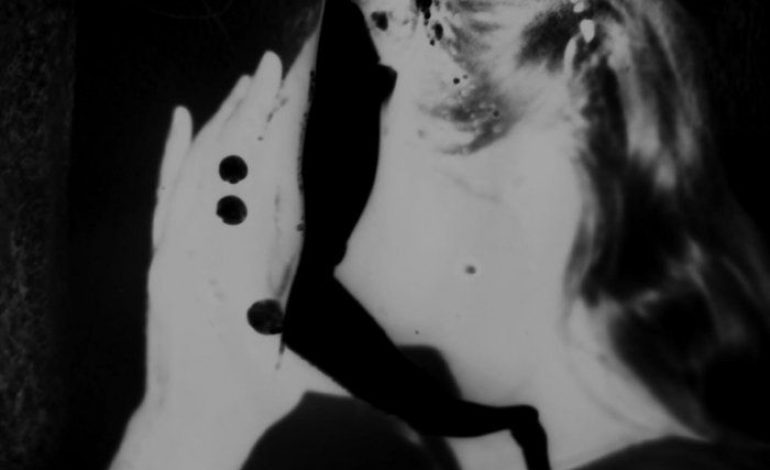

The elegance of complex simplicity
When the buzz-word “visual album” gets thrown around, it usually comes with expectations of grandiose filmography accompanied by pristine, thought-out production and a larger-than-life artist at the center of it all. Some even argue that though the visual album experience is a heightened one, it could take away from a musician’s true roots, i.e. the music at the center of it all. With Cristina Vantzou, all accusations of this nature are immediately put to rest.
Cristina Vantzou has been creating ambient projects, starting with No. 1, then No. 2, No. 3, and now No. 4, since 2010. Though the names are quite simple, these albums are anything but. To call Vantzou’s discography ambient alone would be a gross overgeneralization. These projects make great use of the elegance of string orchestras and collaborators that span from classical to ambient (many from Kranky, her label). With schooling in video art, however, Vantzou has faithfully used the concept of the visual album over a decade before the 2010s megahits, like Beyonce’s Lemonade or Frank Ocean’s Endless, that gave visual albums their buzz-worthy status once again. Her first foray into music was in 2004 as the video artist of The Dead Texan, creating part-illustrated, part-live-action shots of simple elegance that, artistically, looks like something many millennial artists are eager to embody today.
With an artistic eye ahead of her time, Vantzou has translated her surrealistic genius into her solo career’s visual albums as well. No. 3’s breathtaking visuals embody a dream realm that has been previously unopened until she decided to show everyone. The videos that she has released for No. 4 feature lo-fidelity, black-and-white clips of pure eeriness and special scarves captured as if they were alive and fluid themselves. But, following the argument earlier presented, what is there to be said about the music that she is composing? The answer is painfully clear: Vantzou’s creative prowess for creating heady, metaphysical landscapes seems to be able to fluidly fit whatever medium she uses as an outlet.
Take “Glissando for Bodies and Machines in Space,” No. 4‘s opener, for instance. Listening to the track without looking at the visual that Vantzou paired with it still evokes the same slight sense of fear and curiosity that the visual creates. The gently modulated humming that is ominously pitched down and laid side-by-side with vibrating drones paints a vivid picture of someone finding themselves inside an alternate universe that is just slightly different from their own, at least to this listener. It evokes a sense of dread that accompanies knowing that something is wrong but not knowing quite what is. Similarly, the way “At Dawn” utilizes its string orchestra to create droning and colorful tones exudes such pure elegance that it is difficult to picture anything else but endless rolling green hills contrasted by an overcast sky. Vantzou truly understands the seemingly magical ability of ambient music to allow listeners to escape the real world and delve into sceneries and landscapes they didn’t know they had in them.
Though many dismiss ambient music to be too simplistic and zen, Vantzou showcases throughout No. 4 how three-dimensional it could be; she does this best on “Doorway.” It starts off with a hum that grows increasingly muffled. This continues until an extremely bassy note rumbles softer than one could possibly imagine bass could sound. These bass notes completely envelop the instrumental of the song with a sheer casing, until it is joined by a melody so gentle that it is impossible to discern whether a synthesizer or an acoustic instrument created the sound. The undeniable star of “Doorway,” however, is undoubtedly the piano. Like all the other instrumentation, it is soft and feather-light, with short melodies gliding up and down as if the pianist’s hands ghosted over the keys. It is extremely difficult to name whatever feeling that “Doorway” evokes: is it fear, or is it awe, or is it sadness, or is it all three and many more in-betweens? By mixing high tones, low tones, clear tones, distant tones, electronic tones, acoustic tones, gentle tones and sharp tones, Vantzou creates such a multi-faceted track that the addition of every new instrument or melody has the ability to excite anyone to their core if they will let it.
The majority of No. 4 is wonderfully soft, but the one time it diverges from this proves to be just as gratifying. “Garden of Forking Paths,” as the title indicates creates a sonic manifestation of the clear dichotomy between purity and corruption. High and low pitched humming noises drone at different speeds, unwinding until a stunning harp takes center-stage. Because the album has a slight lean towards sadness and fear, the stand-out brightness of this harp is addictive, leaving listeners eager to hear just another quick strum of its saccharine strings. Instead, it is replaced forever by bass-boosted synthesizers whose electronic nature feels far too distant from the harp’s acoustic simplicity. When the harp does return, it is never strummed but rather roughly plucked. The electronic hums and glitches are unrelenting until the last seconds of the song, ending completely separate from how it started. Here, Vantzou beautifully composed an epic in five minutes by taking a slight detour from the overall mood of No. 4.
With No. 4 under her belt, it is clear that Vantzou is not a force to be reckoned with, especially for those with flimsy arguments about the overrated nature of visual albums or ambient music. Vantzou proves that not only is her music formidable by its own but also that only she, as a true Renaissance woman, could have pulled off a project like No. 4 with such ease and poise.
